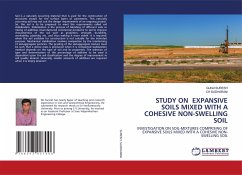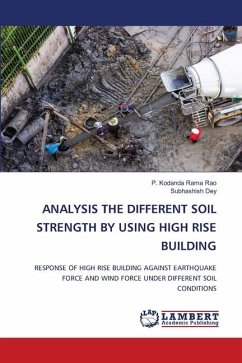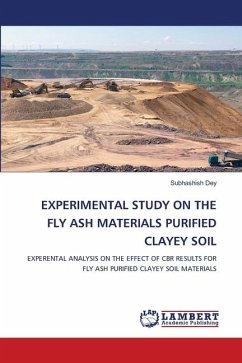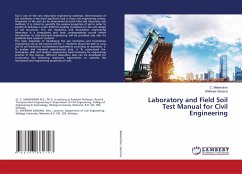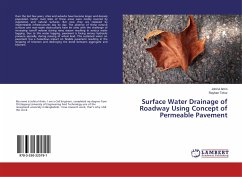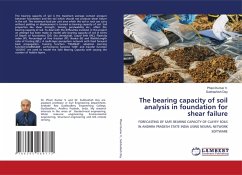
The bearing capacity of soil analysis in foundation for shear failure
FORECASTING OF SAFE BEARING CAPACITY OF CLAYEY SOILS IN ANDHRA PRADESH STATE INDIA USING NEURAL NETWORK SOFTWARE
Versandkostenfrei!
Versandfertig in 6-10 Tagen
40,99 €
inkl. MwSt.

PAYBACK Punkte
20 °P sammeln!
The bearing capacity of soil is the maximum average contact pressure between foundation and the soil which should not produce shear failure in the soil. The maximum load per unit area which the soil or rock can carry without yielding or displacement is termed as bearing capacity of soil. Soil properties like shear strength, density, permeability etc., affect the bearing capacity of soil. To deal with the difficulties involved, in this project an attempt has been made to model safe bearing capacity of soil in terms of Depth of foundation (Df), Dry density(Gammad), Liquid limit (WL), Plasticity ...
The bearing capacity of soil is the maximum average contact pressure between foundation and the soil which should not produce shear failure in the soil. The maximum load per unit area which the soil or rock can carry without yielding or displacement is termed as bearing capacity of soil. Soil properties like shear strength, density, permeability etc., affect the bearing capacity of soil. To deal with the difficulties involved, in this project an attempt has been made to model safe bearing capacity of soil in terms of Depth of foundation (Df), Dry density(Gammad), Liquid limit (WL), Plasticity index (IP), Percentage of Fine fraction (FF), Nvalue (N) and Width/Length ratio of footing (B/L). A multi-layer perception network with feed forward back propagation, training function 'TRAINLM', adaption learning function'LEARNGDM', performance function 'MSE' and transfer function 'LOGSIG' are used to model the Safe Bearing Capacity with varying the number of hidden layers.










